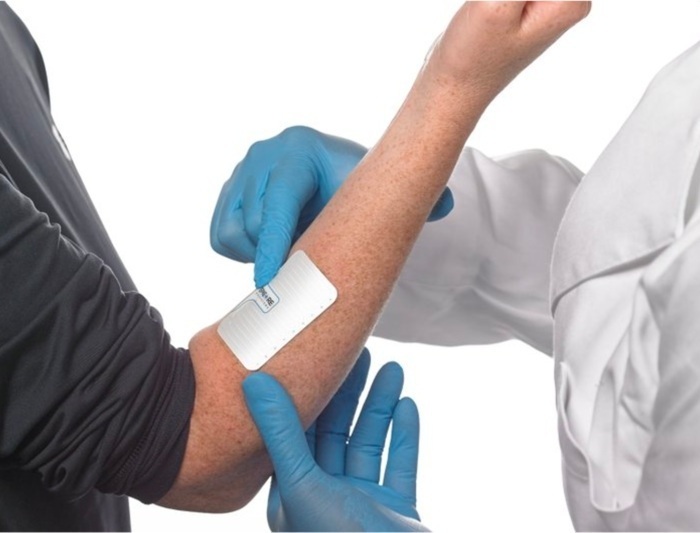Urine Test Detects River Blindness Filarial Worm
|
By LabMedica International staff writers Posted on 11 Sep 2018 |
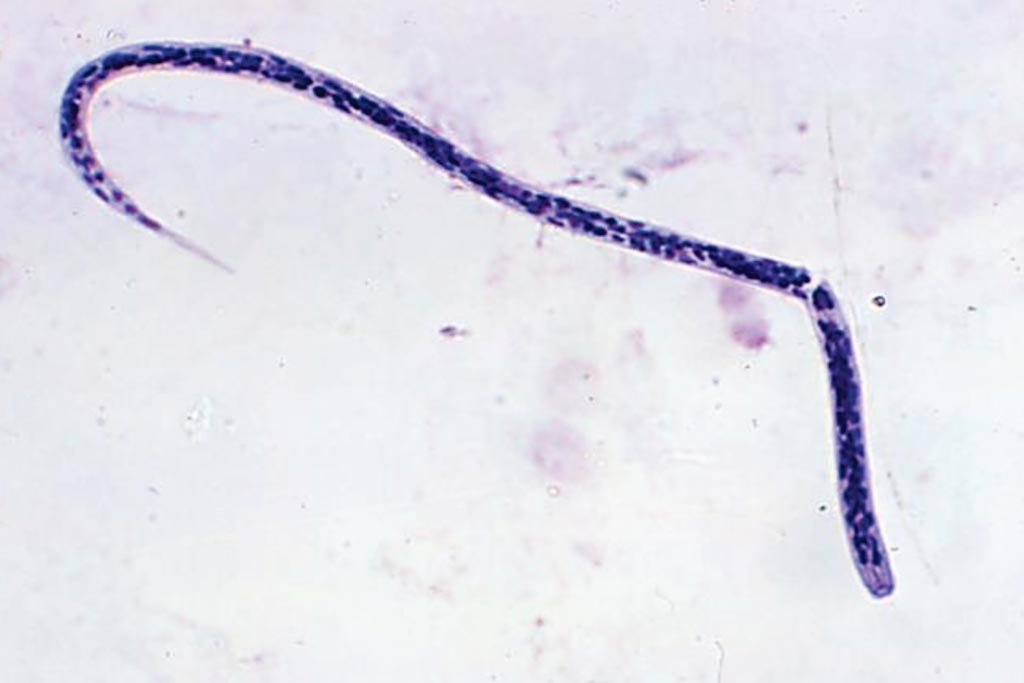
Image: A photomicrograph of a Onchocerca volvulus microfilaria larva, the cause of onchocerciasis, also known as river blindness (Photo courtesy of Dr. Lee Moore / CDC).
River blindness is a filarial disease, like elephantiasis, and occurs when the parasitic worm Onchocerca volvulus takes up residence in the skin. Adult worms deposit microfilaria at an alarming rate, which are ultimately re-spread by blackfly bites.
The microfilariae can migrate to the eye and die, releasing toxins and causing inflammation. People with the disease will slowly go blind without medical intervention. The current gold standard for detecting the parasitic worms is a "skin snip" biopsy. However, snips are generally insensitive indicators of infection, and the sensitivity of the skin snip decreases as the density of microfilaria in the skin decreases. Other tests cannot distinguish between past and current infections.
Scientists at the Scripps Research Institute had previously reported the discovery of the biomarker N-acetyl-tyramine-O-glucuronide (NATOG) in human urine samples and its ability to track treatment progression between medicated patients relative to placebo; they also established its capability to monitor disease burden in a jird model. NATOG is a human-produced metabolite of tyramine, which itself is produced as a nematode neurotransmitter.
The team took over 10 years to develop a new lateral flow assay (LFIA), but it is now ready for manufacturing and testing in the field. The key to the assay's success was in the making of designer antibodies to detect a unique biomarker that only shows up when a human host has metabolized a worm neurotransmitter called tyramine. Humans then secrete this biomarker in urine. A negative on the "dipstick" test shows a colored line in the test. If the patient has the parasite, the test would show no lines. The urine LFIA for onchocerciasis accurately identified 85% of analyzed patient samples.
Kim D. Janda, PhD, a Professor of Chemistry and senior author of the study, said, “Unlike the skin snip biopsy, this non-invasive test is the first to use a metabolite produced by adult worms. Moreover, the dipstick's inexpensive design, coupled with smartphone apps, would offer automatic image processing, which ultimately could translate to address critical gaps in the surveillance and treatment of river blindness.” The study was published on August 24, 2018, in the journal ACS Infectious Diseases.
Related Links:
Scripps Research Institute
The microfilariae can migrate to the eye and die, releasing toxins and causing inflammation. People with the disease will slowly go blind without medical intervention. The current gold standard for detecting the parasitic worms is a "skin snip" biopsy. However, snips are generally insensitive indicators of infection, and the sensitivity of the skin snip decreases as the density of microfilaria in the skin decreases. Other tests cannot distinguish between past and current infections.
Scientists at the Scripps Research Institute had previously reported the discovery of the biomarker N-acetyl-tyramine-O-glucuronide (NATOG) in human urine samples and its ability to track treatment progression between medicated patients relative to placebo; they also established its capability to monitor disease burden in a jird model. NATOG is a human-produced metabolite of tyramine, which itself is produced as a nematode neurotransmitter.
The team took over 10 years to develop a new lateral flow assay (LFIA), but it is now ready for manufacturing and testing in the field. The key to the assay's success was in the making of designer antibodies to detect a unique biomarker that only shows up when a human host has metabolized a worm neurotransmitter called tyramine. Humans then secrete this biomarker in urine. A negative on the "dipstick" test shows a colored line in the test. If the patient has the parasite, the test would show no lines. The urine LFIA for onchocerciasis accurately identified 85% of analyzed patient samples.
Kim D. Janda, PhD, a Professor of Chemistry and senior author of the study, said, “Unlike the skin snip biopsy, this non-invasive test is the first to use a metabolite produced by adult worms. Moreover, the dipstick's inexpensive design, coupled with smartphone apps, would offer automatic image processing, which ultimately could translate to address critical gaps in the surveillance and treatment of river blindness.” The study was published on August 24, 2018, in the journal ACS Infectious Diseases.
Related Links:
Scripps Research Institute
Latest Immunology News
- Companion Diagnostic Test for CRC Patients Identifies Eligible Treatment Population
- Novel Tool Uses Deep Learning for Precision Cancer Therapy
- Companion Diagnostic Test Identifies HER2-Ultralow Breast Cancer and Biliary Tract Cancer Patients
- Novel Multiplex Assay Supports Diagnosis of Autoimmune Vasculitis
- Blood Test Predicts Immunotherapy Efficacy in Triple-Negative Breast Cancer
- Simple Genetic Testing Could Predict Treatment Success in Multiple Sclerosis Patients
- Novel Gene Signature Predicts Immunotherapy Response in Advanced Kidney Cancers
- New Technology Deciphers Immune Cell Communication to Predict Immunotherapy Response
- AI Model Accurately Predicts MSI Tumor and Immune Checkpoint Inhibitor Responsiveness
- Precision Tool Predicts Immunotherapy Treatment Failure in Melanoma Patients
- Paper-Based Device Accurately Detects Immune Defects in 10 Minutes
- New AI System Uncovers Hidden Cell Subtypes to Advance Cancer Immunotherapy
- Evolutionary Clinical Trial to Identify Novel Biomarker-Driven Therapies for Metastatic Breast Cancer
- Groundbreaking Lateral Flow Test Quantifies Nucleosomes in Whole Venous Blood in Minutes
- World’s First Clinical Test Predicts Best Rheumatoid Arthritis Treatment
- Blood Test Detects Organ Rejection in Heart Transplant Patients
Channels
Clinical Chemistry
view channel
Gold Nanoparticles to Improve Accuracy of Ovarian Cancer Diagnosis
Ovarian cancer is considered one of the deadliest cancers, in part because it rarely shows clear symptoms in its early stages, and diagnosis is often complex. Current approaches make it difficult to accurately... Read more
Simultaneous Cell Isolation Technology Improves Cancer Diagnostic Accuracy
Accurate cancer diagnosis remains a challenge, as liquid biopsy techniques often fail to capture the complexity of tumor biology. Traditional systems for isolating circulating tumor cells (CTCs) vary in... Read moreMolecular Diagnostics
view channel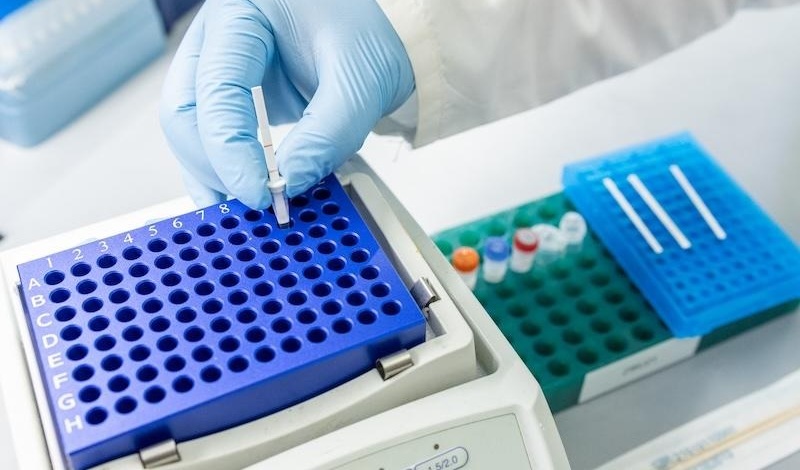
CRISPR-Based Tuberculosis Test Uses Mouth Swab to Simplify Screening
Tuberculosis remains the world’s deadliest infectious disease, with more than 10 million people falling ill annually and about 40% of cases going undiagnosed. Current testing depends on sputum samples,... Read more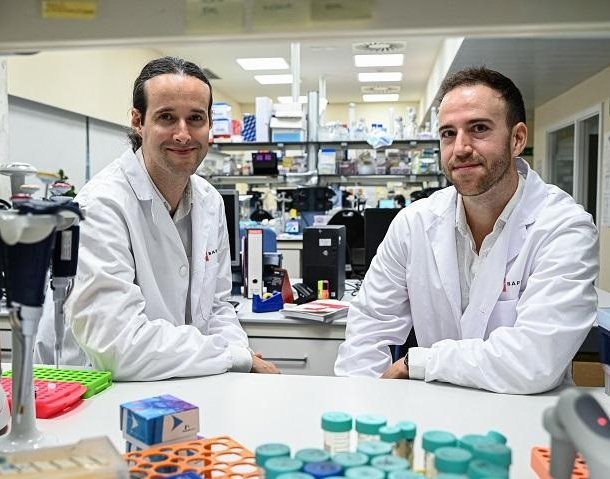
New DNA Methylation-Based Method Predicts Cancer Progression
Cancer often develops silently for years before diagnosis, making it difficult to trace its origins and predict its progression. Traditional approaches to studying cancer evolution have lacked the precision... Read moreHematology
view channel
Pioneering Model Measures Radiation Exposure in Blood for Precise Cancer Treatments
Scientists have long focused on protecting organs near tumors during radiotherapy, but blood — a vital, circulating tissue — has largely been excluded from dose calculations. Each blood cell passing through... Read more
Platelets Could Improve Early and Minimally Invasive Detection of Cancer
Platelets are widely recognized for their role in blood clotting and scab formation, but they also play a crucial role in immune defense by detecting pathogens and recruiting immune cells.... Read more
Portable and Disposable Device Obtains Platelet-Rich Plasma Without Complex Equipment
Platelet-rich plasma (PRP) plays a crucial role in regenerative medicine due to its ability to accelerate healing and repair tissue. However, obtaining PRP traditionally requires expensive centrifugation... Read moreImmunology
view channel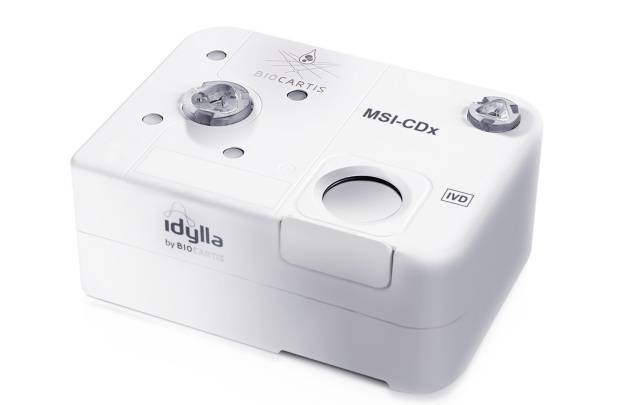
Companion Diagnostic Test for CRC Patients Identifies Eligible Treatment Population
Colorectal cancer remains one of the leading causes of cancer-related deaths worldwide, and identifying which patients will benefit most from targeted immunotherapies is critical. Existing diagnostic methods... Read more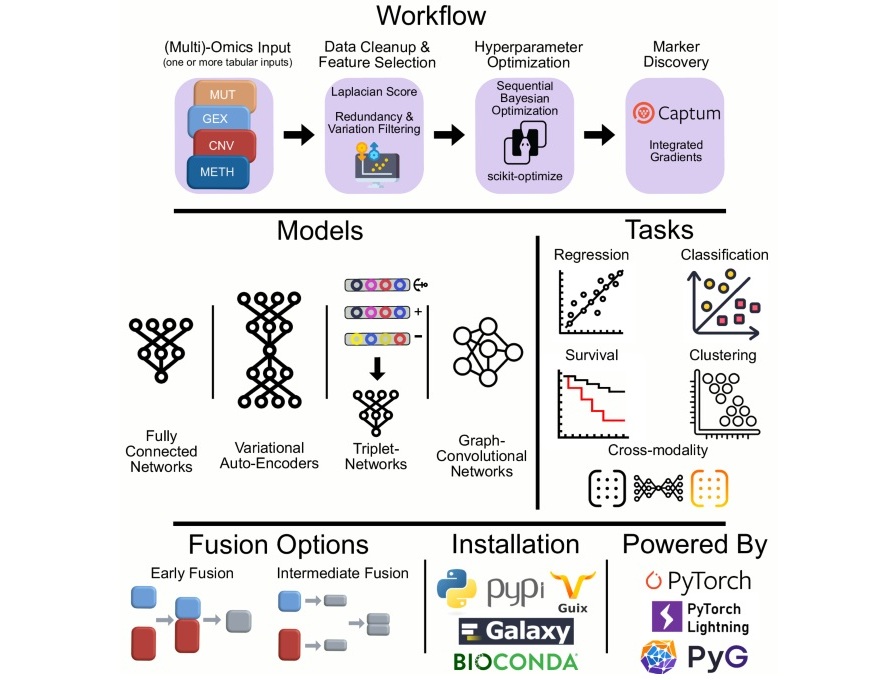
Novel Tool Uses Deep Learning for Precision Cancer Therapy
Nearly 50 new cancer therapies are approved each year, but selecting the right one for patients with highly individual tumor characteristics remains a major challenge. Physicians struggle to navigate the... Read more
Companion Diagnostic Test Identifies HER2-Ultralow Breast Cancer and Biliary Tract Cancer Patients
Breast cancer is the most common cancer in Europe, with more than 564,000 new cases and 145,000 deaths annually. Metastatic breast cancer is rising in younger populations and remains the leading cause... Read morePathology
view channel
New Microscope Promises to Speed Up Medical Diagnostics
Traditional microscopes are designed for flat samples, yet real-life specimens, such as tissue slides, are often curved or uneven. This mismatch forces researchers to rely on scanning methods or costly... Read more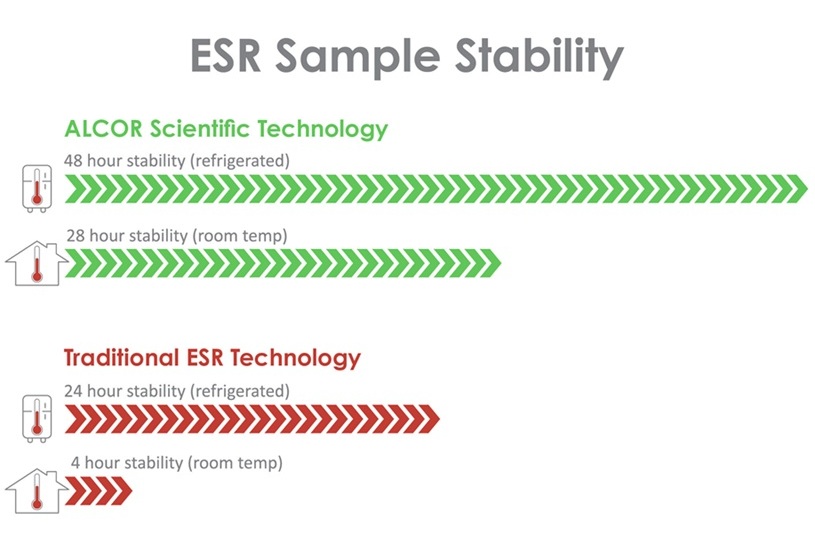
ESR Testing Breakthrough Extends Blood Sample Stability from 4 to 28 Hours
Erythrocyte sedimentation rate (ESR) is one of the most widely ordered blood tests worldwide, helping clinicians detect and monitor infections, autoimmune conditions, cancers, and other diseases.... Read moreAccurate Pathological Analysis Improves Treatment Outcomes for Adult Fibrosarcoma
Adult fibrosarcoma is a rare and highly aggressive malignancy that develops in connective tissue and often affects the limbs, trunk, or head and neck region. Diagnosis is complex because tumors can mimic... Read more
Clinicopathologic Study Supports Exclusion of Cervical Serous Carcinoma from WHO Classification
High-grade serous carcinoma is a rare diagnosis in cervical biopsies and can be difficult to distinguish from other tumor types. Cervical serous carcinoma is no longer recognized as a primary cervical... Read moreTechnology
view channel
Coral-Inspired Capsule Samples Hidden Bacteria from Small Intestine
The gut microbiome has been linked to conditions ranging from immune disorders to mental health, yet conventional stool tests often fail to capture bacterial populations in the small intestine.... Read more
Rapid Diagnostic Technology Utilizes Breath Samples to Detect Lower Respiratory Tract Infections
Respiratory tract infections (LRTIs) are leading causes of illness and death worldwide, particularly among vulnerable populations such as the elderly, young children, and those with compromised immune systems.... Read moreIndustry
view channel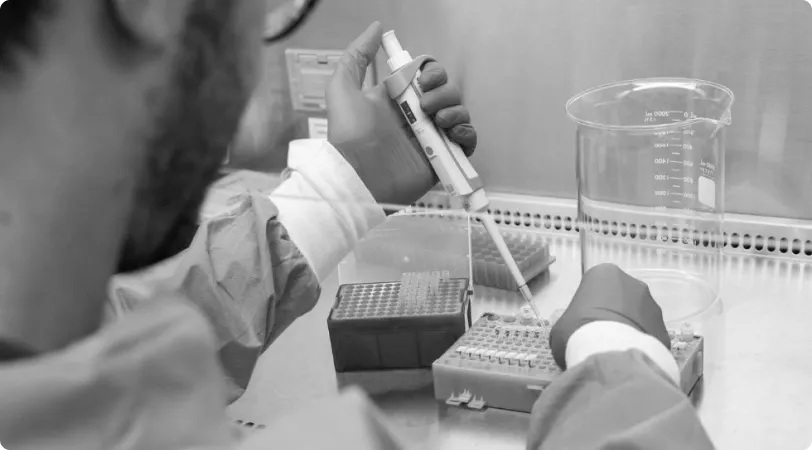
VedaBio Partners With Mammoth Biosciences to Expand CRISPR-Based Diagnostic Technologies
VedaBio (San Diego, CA, USA) has entered into a non-exclusive license agreement with Mammoth Biosciences (Brisbane, CA, USA) for the use of select CRISPR-based technologies in diagnostic applications.... Read more


















